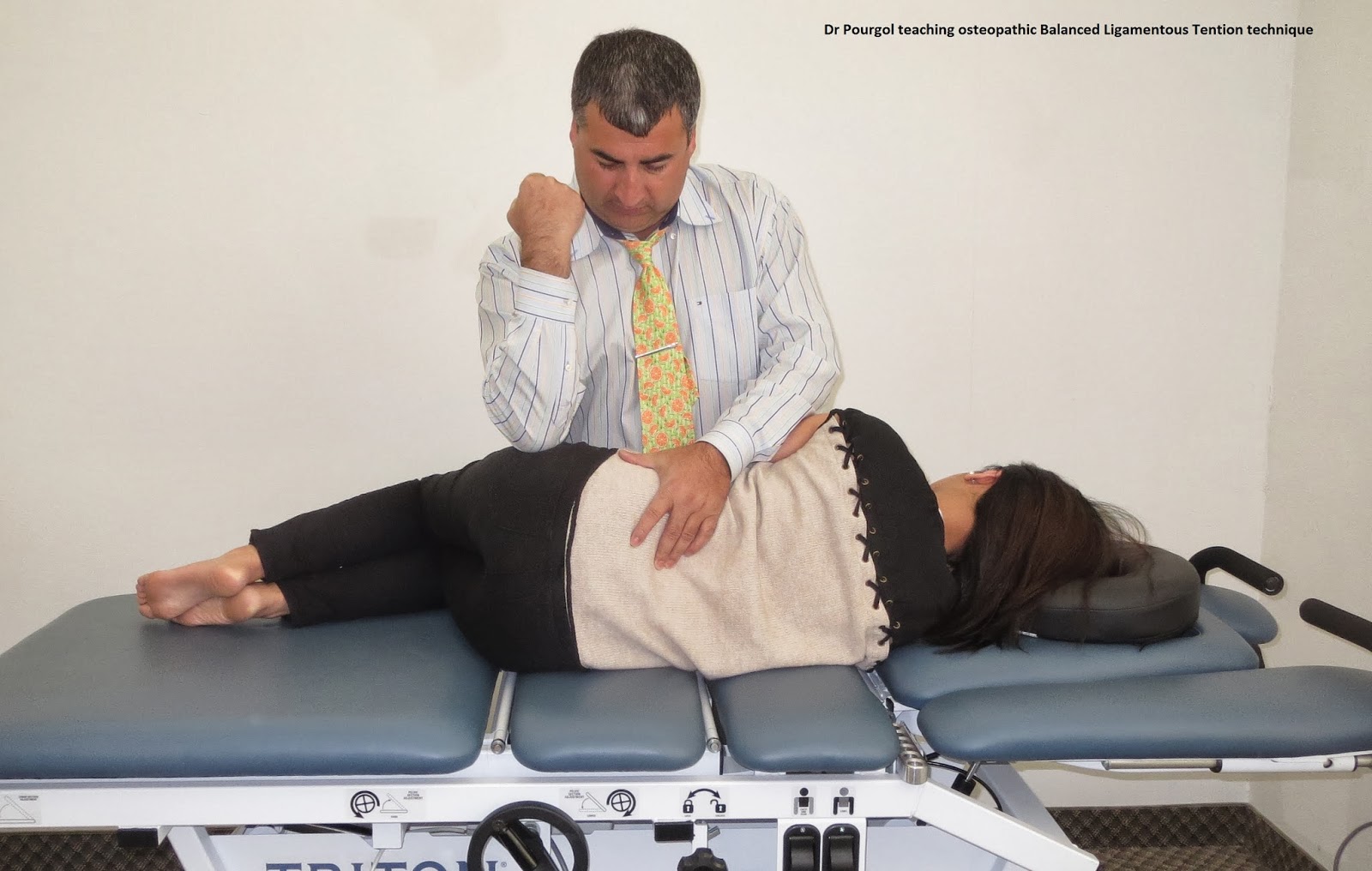How does osteopathy help patients with low back pain of mechanical origin?
There are a few known mechanism affecting individuals who receive osteopathic treatment for low back pain.
First
mechanism: Osteopathic spinal manipulation increases joint mobility by
producing a barrage of impulses in muscle spindle afferents and
smaller-diameter afferents ultimately silencing facilitated γ (gamma)
motoneurons as proposed by Korr. This theory is supported by several
recent studies by the Pickar lab and by findings that low back pain
patients have altered proprioceptive input from muscle spindles. Recent
work has also shown that that spinal manipulation modifies the discharge
of Group I and II afferents. This has been accomplished by recording
single-unit activity in muscle spindle and Golgi tendon organ afferents
in an animal model during manipulation.
A second mechanism is
that osteopathic spinal manipulation, by mechanically opening the
intravertebral foramina (IVF), decreases pressure on the dorsal roots.
Substantial evidence shows that the dorsal nerve roots and dorsal root
ganglia are susceptible to the effects of mechanical compression.
Compressive loads as low as 10 mg applied to dorsal roots increase the
discharge of Group I, II, III and IV afferents. This compression can
also alter non--impulse-based mechanisms (eg, axoplasmic transport) and
cause edema and hemorrhage in the dorsal root. Spinal manipulation
mechanically decreases the pressure in the IVF by gapping the facet
joints and opening the IVF. For instance, the synovial space of the
lumbar facet joints increases by about 0.7 mm in individuals receiving
manipulation. This doesn't seem like much, but as with any therapy there
is usually a course of care involved. Even in moderate stenosis
patients treated by osteopaths typically see significant pain reduction
following a period of 1-2 weeks of treatment.
A third mechanism
is based on findings that persistent alterations in normal sensory input
resulting from an injury can increases the excitability of neuronal
circuits in the spinal cord. Osteopathic spinal manipulation works by
applying non-noxious mechanical inputs to these circuits. This involves
mechanisms similar to the pain-gate theory proposed by Melzack and Wall
wherein activation of A-α and A-β fibers can reduce chronic pain and
increase pain threshold levels. This is supported by studies where
spinal manipulation of the lumbar region decreases central pain
processing as measured via pin-prick tests. Additional studies have
shown a reduction in central pain sensitivity after spinal manipulation
using graded pressure and noxious cutaneous electrical stimulation.
A
fourth mechanism involves β-endorphin mechanisms. Studies have shown
increases in beta-endorphin levels after osteopathic spinal manipulation but not
after control interventions.
Fifth mechanism: Substantial evidence
also shows that osteopathic spinal manipulation activates paraspinal muscle reflexes
and alters motoneuron excitability. These effects are still being
studied and appear to differ depending on whether performed on patients
in pain or pain-free subjects.
A sixth mechanism involves
inhibition of somatosomatic reflexes by alterations in muscle spindle
input produced by osteopathic spinal manipulation. It is thought that
osteopathic spinal manipulation may normalize spindle biomechanics and improve
muscle spindle discharge.
Lastly, in humans, osteopathic manual
treatment can decrease heart rate and blood pressure while increasing
vagal afferent activity as measured by heart-rate variability. Manual
therapies in rats have been shown to produce an inhibitory effect on the
cardiovascular excitatory response and reduce both blood pressure and
heart rate. Manual therapies such as osteopathic soft tissue therapy
have been shown to impact behavioral manifestations associated with
chronic activation of the HPA axis such as anxiety and depression, while
decreasing plasma, urinary, and salivary cortisol and urinary
corticotropin releasing factor-like immunoreactivity (CRF-LI). Manual
stimulation in rats has been shown to significantly increase
glucocorticoid receptor gene expression which enhanced negative feedback
inhibition of HPA activity and reduced post-stress secretion of ACTH
and glucocorticoid.
National University of Medical Sciences
(
www.numss.com ) offers 30 medical degrees including nine degree programs in osteopathy (DO, PhD, MSc, MA, BSc). We teach in 65 cities in 35 countries.
Contact
NUMSS for information on how to become an osteopath at
admissions@numss.com.
Osteopathy is the
fastest growing primary health care profession and one of the top 25 occupations in demand as reported by CIBC.












































.jpg)





